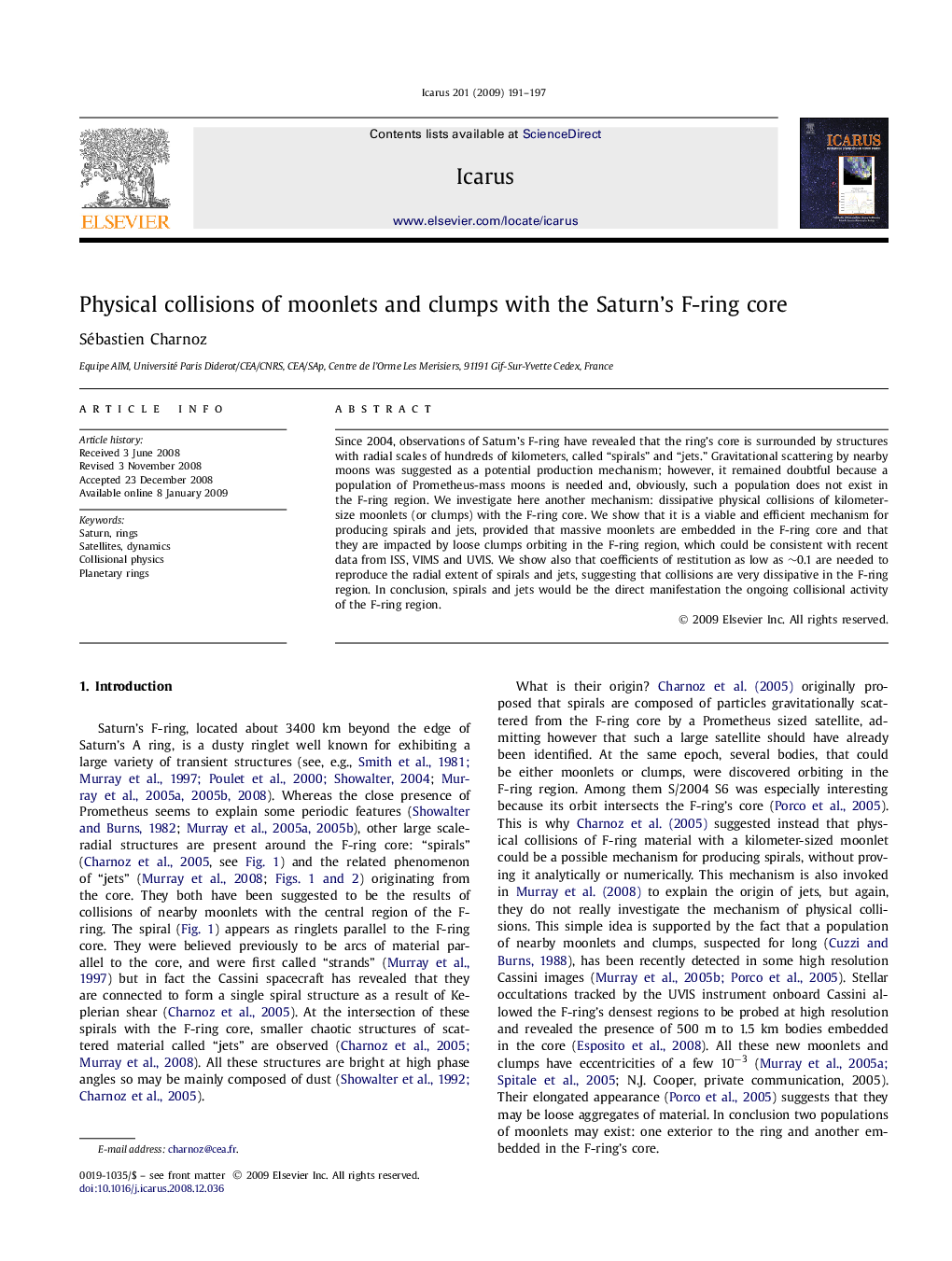| Article ID | Journal | Published Year | Pages | File Type |
|---|---|---|---|---|
| 1775332 | Icarus | 2009 | 7 Pages |
Abstract
Since 2004, observations of Saturn's F-ring have revealed that the ring's core is surrounded by structures with radial scales of hundreds of kilometers, called “spirals” and “jets.” Gravitational scattering by nearby moons was suggested as a potential production mechanism; however, it remained doubtful because a population of Prometheus-mass moons is needed and, obviously, such a population does not exist in the F-ring region. We investigate here another mechanism: dissipative physical collisions of kilometer-size moonlets (or clumps) with the F-ring core. We show that it is a viable and efficient mechanism for producing spirals and jets, provided that massive moonlets are embedded in the F-ring core and that they are impacted by loose clumps orbiting in the F-ring region, which could be consistent with recent data from ISS, VIMS and UVIS. We show also that coefficients of restitution as low as â¼0.1 are needed to reproduce the radial extent of spirals and jets, suggesting that collisions are very dissipative in the F-ring region. In conclusion, spirals and jets would be the direct manifestation the ongoing collisional activity of the F-ring region.
Related Topics
Physical Sciences and Engineering
Earth and Planetary Sciences
Space and Planetary Science
Authors
Sébastien Charnoz,
